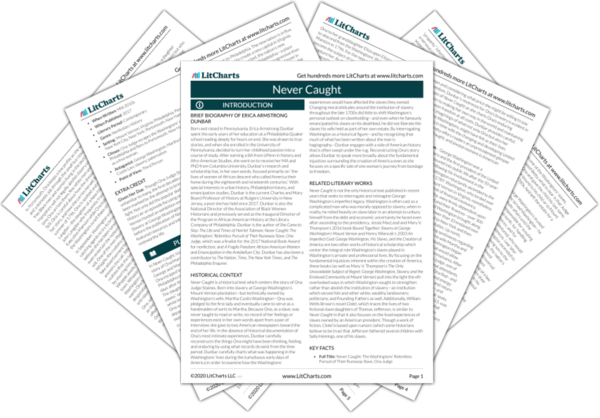William Lee was an enslaved man at Mount Vernon who was sold to the Washingtons when he was still a teenager. Lee was of a light complexion, and, for this reason, George Washington made Lee his personal butler. Washington outfitted Lee in fine clothing—he wanted his personal valet to look good—and often took Lee with him out riding on horseback. Lee—who was known as “Billy” in his youth—began changing after several trips up north, where, Dunbar writes, he no doubt saw thriving communities of free Black men and women for the first time. Lee adopted the surname of the man he must have believed to have been his father and asked to be addressed as “William,” demonstrating his desire for greater autonomy and individuality. Lee married a free Black woman, Margaret Thomas, and his new wife returned to Mount Vernon with him—but there is no record of her being there, suggesting that as a free woman, she found the risks of living in the South too great to bear and returned northward. After shattering both kneecaps in two separate incidents, William Lee became physically incapacitated and turned to drinking to soothe his constant pain. In his final will, Washington liberated William Lee immediately but offered him the option of staying on at Mount Vernon and receiving an annuity of $30. Lee’s alcoholism sent him to an early grave; he perished in 1810 and was buried in the slave burial ground at Mount Vernon.
